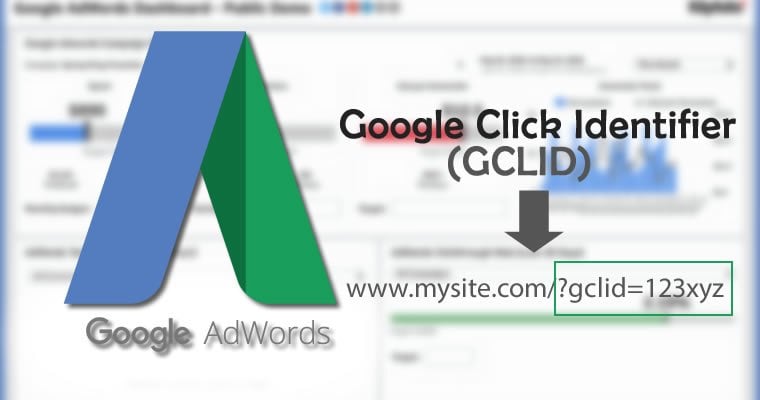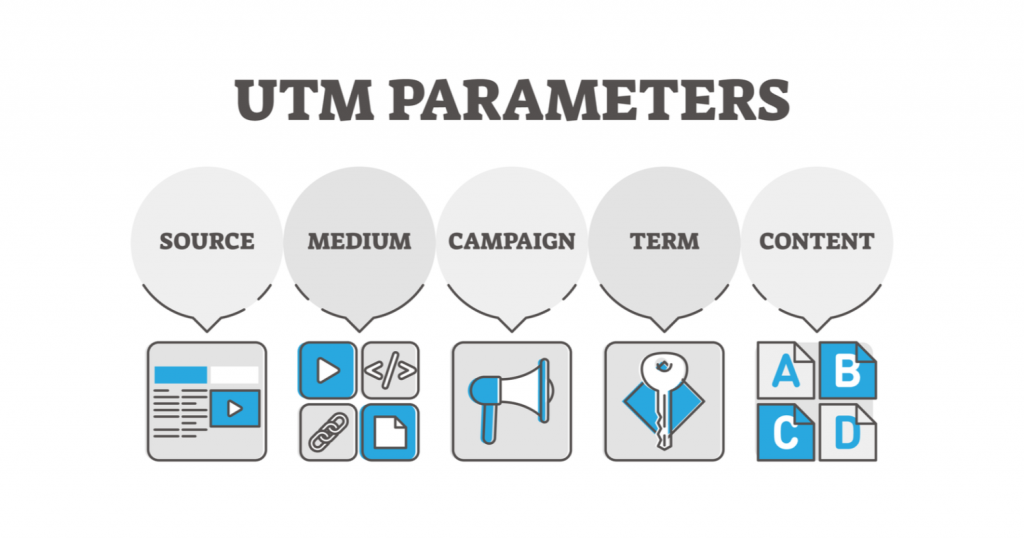Enable GCLID Auto-Tagging in Google Ads While Mitigating Drawbacks
If you are reading this article, chances are that you are running PPC on Google Ads or are planning to do so. When it comes to PPC, you are only as good as your data.
John Wanamaker once famously said, “Half the money I spend on advertising is wasted; the trouble is I don’t know which half.” To know how your ads perform and understand what works and what does not, you need a complete drill-down of what happens with your ads. This includes tracking everything related to your ads and everything related to what happens after you get a visit from an ad. And, all of the data needs to be connected to make proper sense of everything. Otherwise, you are shooting in the dark and waiting for some shots to stick.
Tracking of adverts is done with various utilities, mainly UTM parameters. Google also tracks ads through Google Click ID (GCLID). Auto-tagging works by using GCLID to visualize data on Google Analytics. Throughout this article, we will discuss what GCLID is, how auto-tagging can be set up, its benefits and drawbacks, and mitigating the drawbacks.

Image Source: teamdiscovery.co.uk
What is GCLID?
GCLID, which is short for Google Click Identifier, is a tracking ID that is suffixed to your URL dynamically for every visitor who clicks an ad to visit your website. This ID contains campaign information and other data points for attribution. Google uses this ID for conversion tracking and translating campaign data and other attribution information for Google Analytics. Essentially, GCLID helps Google Ads communicate with Google Analytics.
What is Auto-tagging in Google Ads?
Auto-tagging is a feature that automatically enables GCLID tracking on Google Ads. Once you enable this, every URL in your campaign would get GCLID suffixed and every visitor would get a unique ID. The URL looks something like this: www.example.com/?gclid=123xyz1123asdasd1321
Setting up Auto-tagging in Google Ads
Setting up Auto-tagging in Google Ads is fairly simple. But, it is turned off by default so you need to enable it. Here are the steps:
- Sign in to your Google Ads account.
- Click on Settings from the menu in the left sidebar.
- Go to Account Settings.
- Click on Auto-Tagging and check the box next to “Tag the URL that people click through from my ad.”
- Save
That’s it. This will enable Auto-Tagging. However, Neither you nor a third-party application can decipher the data. This data is only readable to Google and you need to connect Google Analytics to your Ad account to make sense of it.
Here are the steps to connect your Google Ads account with Google Analytics:
- Sign in to Google Analytics.
- Click Admin and navigate to the property you want to link.
- In the Property column, click Google Ads Linking.
- Click + New link group.
- Select the account, enter the link group title (whatever you want), and continue.
- Turn linking ON for each view in the property in which you want Google Ads data.
- Click Link Accounts.
That’s it. Now, you can get the data generated from GCLID and Auto-Tagging on Google Analytics.
GCLID and Auto-Tagging VS UTM Parameters: Benefits and Drawbacks
GCLID is amazing and it works really well with Google Analytics. But so is UTM tagging which is universally used link tracking. Let’s try to understand how they go against one another.
1. GCLID is set and forget. You set it up once and you are not bothered again about this. Open Google Analytics and you get the data you need.
On the other hand, UTM parameters are usually manually added to each ad group or campaign. You can enable UTM tracking template (ValueTrack parameters) which works account wide but if you want to customize or add specific source tags, you would need to set them up individually.
2. GCLID contains several data points that are not available through UTM tracking. GCLID can also track conversions.
UTM tagging on Google Ads can track keyword, Ad ID, Campaign ID, etc. The complete list is here. You can also use your own custom tags.
3. GCLID is only readable by Google Analytics.
On the other hand, UTM tracking is universally readable by multiple tracking and analytics tools. This helps you leverage the data for multiple purposes like segmentation, scoring, personalization, etc. along with analytics.
As you can see both tagging strategies have their benefits and drawbacks. But, the good news is, you are not stuck to choosing any. You can use both GCLID and UTM parameters to get data and conversion tracking on Google’s platform while also using third-party applications for various marketing, sales, and analytical operations.

Image Source: Search Engine Journal
Using Third-party Tracking to Mitigate Drawbacks of Auto-Tagging
Advertising data is crucial for your sales and marketing efforts. While auto-tagging primarily helps you in analytics, there is so much you can do using your advertising data. Plus, GCLID only works for Google Ads. What about tracking other campaigns that you run? Email campaigns, ads on other platforms, social media campaigns, etc. How do you track engagement from multiple platforms? For example, let’s say that a visitor first finds you from Google Ads but later visits you from another platform. How do you track everything?
Think of GCLID like an Apple proprietary accessory. It works great with your Apple device but if you need usability with multiple devices, you need something universal. UTM parameters here will help third-party tools use your Google Ad data to help you run various sales and marketing strategies. While Google Analytics provides holistic data, a B2B journey tracking focused software like Salespanel can connect the data to each individual lead activating various workflows.
Customer Journey Tracking
Google Ads data is crucial for customer journey tracking. For most Google Search advertisers, it is the very first touchpoint a customer engages with. Knowing where the customer came from, which keyword they searched for, and understanding their motivation is crucial to proper customer journey tracking.
Customer journey tracking helps you visualize the entire journeys of your customers throughout your funnel. Every page visit, every content interaction, every form interaction, etc.
Forms and Live Chat Attribution
A tool like Salespanel that tracks forms and live chat can help you connect these crucial touchpoints and acquisition mediums with your ad campaigns. For instance, when a lead sends a message on live chat, your reps can know which keyword they searched for before visiting. The same is the case for forms. You will get the ad data for every individual lead.
Long Cycle Conversion Attribution
This is not a determining factor if your sales cycle is usually shorter than 3 months. But, for those with longer sales cycles, it is important to know that Google does not track performance for more than 90 days.
If your business deals with long sales cycles of high ticket deals, it is a good idea to use a third-party tracking solution that retains data. Salespanel retains data for a year.
Marketing and Advertising Personalization
Personalization is key to customer engagement. A third-party tracking solution enables you to use Google Ads data and personalize your campaigns accordingly. For example, you can show targeted website campaigns or run retargeting campaigns based on the keyword your visitors searched for or the campaign they visited from.
Segmentation
Getting Google Ads data to your lead tracking software can help you segment leads based on any ValueTrack UTM parameter (Keyword, campaign ID, Ad ID, etc.). Sure you can do the same on Google Analytics but the data you will get is only statistical. Salespanel can help you segment every individually identifiable lead/customer based on Google Ads data.
Lead Qualification
UTM tagging helps you qualify your leads using the acquired data. You can score your leads based on keywords or campaigns. For example, you can prioritize leads who visit after searching high-intent or high-value keywords. If you have a campaign where you are running ads on the keywords “what is marketing attribution” and “best marketing attribution software”, the intent of the visitors differ greatly. The latter keyword brings visitors with much higher purchase intent and can be prioritized.
Intent Analysis and Quality Checking
A customer journey analyzing software helps you manually check visitors and understand intent and quality. This is super helpful for B2B businesses that work with lower tickets and higher volumes. We use Salespanel ourselves to manually inspect individual visitor sessions from time to time in order to understand if we are getting real traffic or bots.
A healthy percentage of your visitors coming from high-intent keywords performing intent-proving activities would mean that your campaigns are bringing the right people.
Sales Intelligence
Sending advertising data along with lead information helps your sales reps understand the motivation of their leads better. Your reps will know what leads searched for, which pages they engaged with, what actions they took without even asking any questions. This gives them a significant advantage to tailor their sales pitches and be prepared for conversations.
Salespanel and many other tools sync this data directly to your CRM. So, your reps get everything they need without leaving their comfort zone.
Closing Thoughts
GCLID Auto-Tagging is fantastic. With a few clicks, you enable account-wide tracking for your adverts. With Google Analytics being a product from Google, it is able to decipher the data and provide rich analytics unlike any other analytics solution in the market. However, GCLID has its limitations which are solved with third-party tracking solutions using UTM tagging. You can use both strategies and get the best of both worlds.
Sell more, understand your customers’ journey for free!
Sales and Marketing teams spend millions of dollars to bring visitors to your website. But do you track your customer’s journey? Do you know who buys and why?
Around 8% of your website traffic will sign up on your lead forms. What happens to the other 92% of your traffic? Can you identify your visiting accounts? Can you engage and retarget your qualified visitors even if they are not identified?



